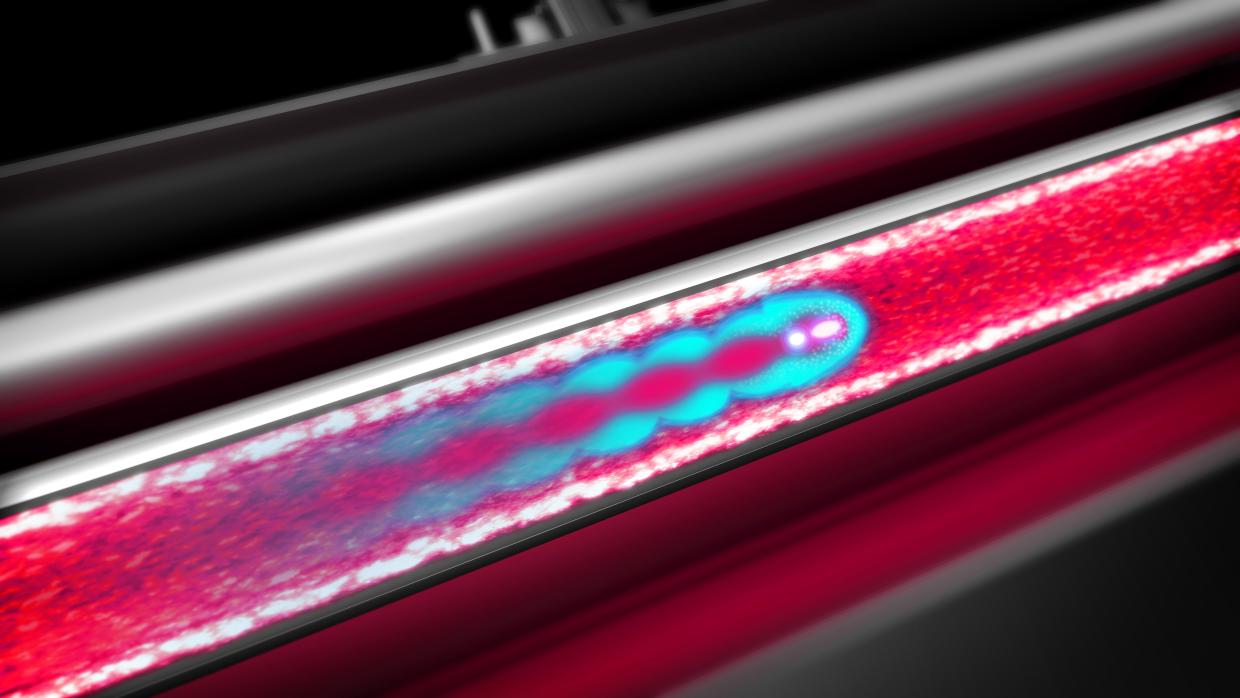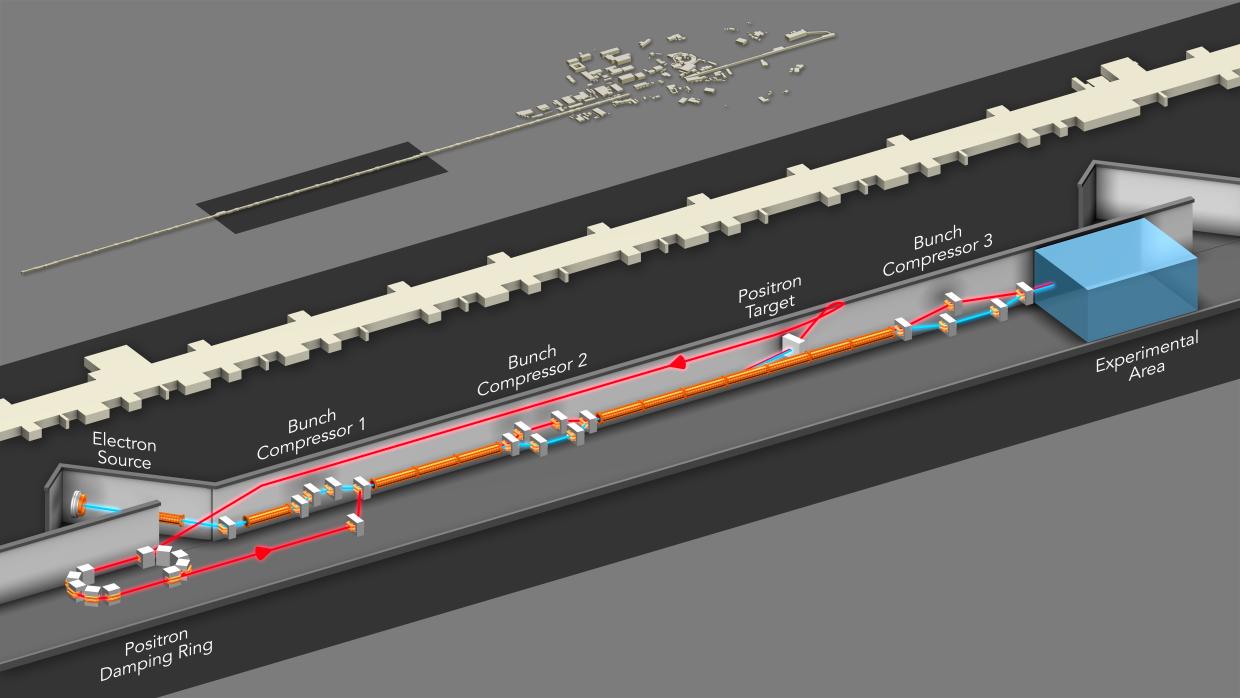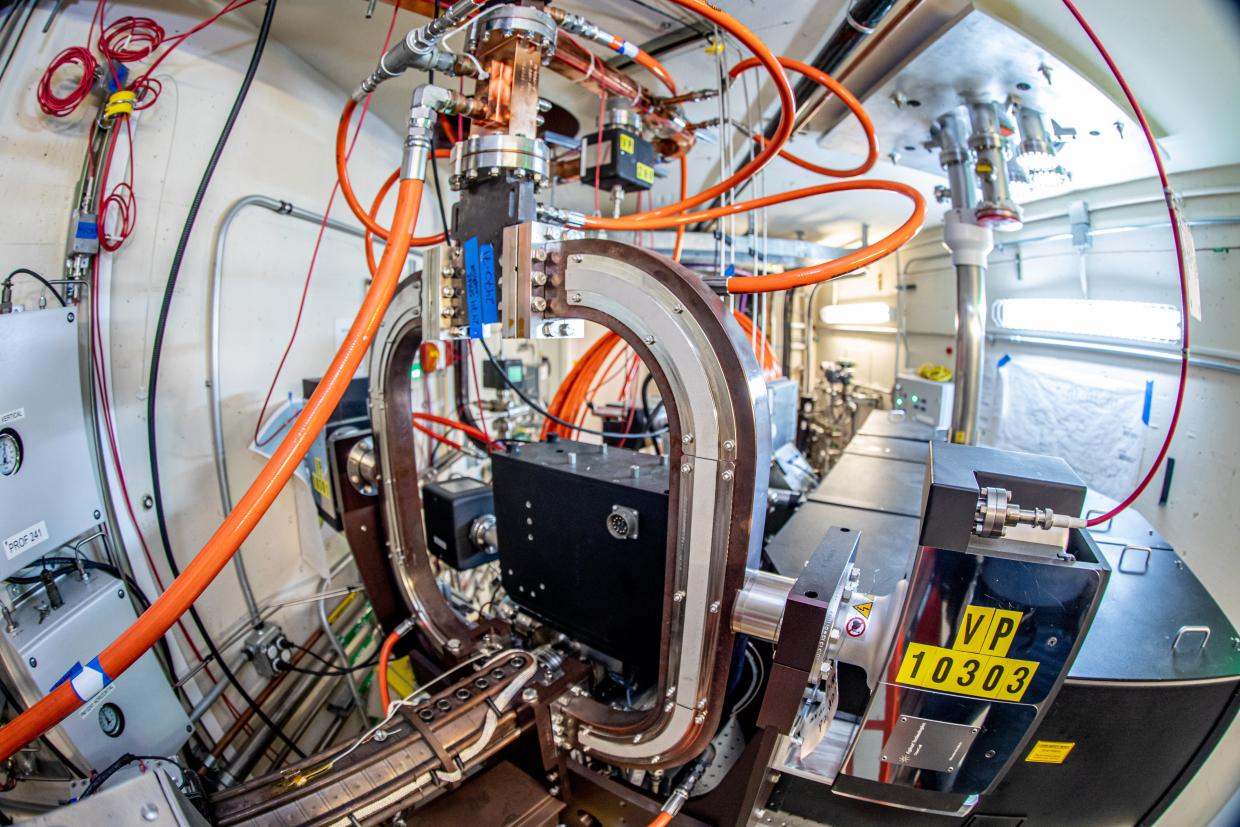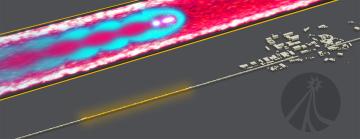SLAC starts up new facility to revolutionize particle accelerators
FACET-II will pave the way for a future generation of particle colliders and powerful light sources, opening avenues in high-energy physics, medicine, and materials, biological and energy science.
Menlo Park, Calif. — A new facility that could pave the way for a future generation of particle colliders and powerful light sources has turned on at the Department of Energy’s SLAC National Accelerator Laboratory. Operating as a DOE user facility, FACET-II is the only facility in the world capable of providing high-energy electron and positron beams for researching a vast array of revolutionary accelerator technologies that could shrink future accelerators by factors of 100 to 1,000 and sharpen their capabilities.
“Particle accelerators are the ultimate microscopes,” says Mark Hogan, FACET-II project scientist. “We can use them to make high-energy beams that we can collide to understand the tiniest particles and the forces that hold the universe together, or we can wiggle the beams back and forth to create powerful bursts of X-rays that allow us to take pictures of ultrasmall, ultrafast atomic processes to understand biology and chemistry. FACET-II will help us develop new technologies that are going to allow us to build machines that are smaller, less expensive and more powerful.”
Surf’s up
The project is an upgrade to the Facility for Advanced Accelerator Experimental Tests (FACET), a DOE Office of Science user facility that operated from 2011 until 2016, when the facility was decommissioned to make way for upgrades to the lab’s X-ray free-electron laser, the Linac Coherent Light Source (LCLS). FACET-II builds on the successes of FACET, where scientists demonstrated that a technique called plasma wakefield acceleration can boost the energy of electrons and their antimatter particles, positrons. In this method, researchers send a bunch of high-energy particles through a hot ionized gas, or plasma, creating a plasma wake for a trailing bunch to “surf” on, ramping up to extremely high energies in a short distance.

In conventional accelerators, particles draw energy from a radiofrequency field inside metal structures. Since these structures can only support a limited energy gain per distance before breaking down, accelerators need to be extremely long to reach higher energies and are expensive to build. The plasma wakefield approach has the potential to dramatically shrink the size and cost of particle accelerators. Future plasma accelerators could, for example, unfold the same acceleration power as SLAC’s 2-mile-long copper linear accelerator (linac) in just a few meters.
The next generation
Over the course of two years, crews at SLAC installed a state-of-the-art high brightness electron source and new electron bunch compressor systems for producing intense beams. They also upgraded the facility’s control systems and installed tools to analyze the beam properties.
FACET-II will produce beams of highly energetic electrons like its predecessor, but with even better quality. The new facility uses one-third of the SLAC linac – sending electrons from the source at one end to the experimental area at the other end – to generate an electron beam with an energy of 10 billion electronvolts. Its design also allows researchers to add the capability to produce and accelerate positrons, which would allow researchers to gain more insights into plasma wakefield acceleration and inform the development of plasma-based electron-positron particle colliders that would enhance our understanding of nature’s fundamental particles and forces.

“If we're going to use plasma wakefield acceleration to make an electron-positron collider for high energy physics, we first need to understand how to accelerate positrons in plasma,” Hogan says. “SLAC is the only laboratory with the infrastructure needed to provide positron beams for this research. We hope to bring this capability online in the next few years, which will set FACET-II apart from any other facility in the world.”
The facility will also help scientists design a new generation of light sources, such as brighter-than-ever X-ray lasers, and lead to improvements to existing X-ray lasers, such as LCLS. These powerful discovery machines provide scientists with unparalleled views of the ever-changing atomic world and open up new avenues that range from high-energy physics to medicine and provide potential benefits for research in materials, biological and energy science.
“Turning on FACET-II is like opening a door that no one’s ever looked behind,” says project director Vitaly Yakimenko, FACET division director and deputy director for science in SLAC’s Accelerator Division. “It will produce electron beams a hundred times more intense than anything that came before and create entirely new scientific opportunities.”
Pushing innovation
As a DOE user facility, FACET-II will operate roughly six months a year, delivering beam to about 25 experiments and hosting approximately 250 researchers from universities, industry and other national laboratories.
In the coming months, the FACET-II program advisory committee will check the readiness of initial experiments that were chosen for beam time and review a second round of proposals to go into the queue for upcoming science. Through January, teams will work on bringing all the pieces of FACET-II online and getting the beam to the right energy and quality. As teams install new experimental hardware, users will work in parallel to make sure that everything is working properly and picking up the right signals.

In the first experiments, expected to kick off this coming February, researchers will investigate ways to preserve beam quality, improve plasma wakefield acceleration techniques and generate and accelerate positrons. They will also develop Trojan Horse-II, an update to an existing technique that can produce an intense electron beam by "sneaking" electrons into plasma.
FACET-II could also potentially provide insight into new and unexpected physics such as gamma ray bursts, the most energetic form of electromagnetic radiation, and strong-field quantum electrodynamics (QED), both of which play an important role in extreme astrophysical phenomena such as cosmic rays and exploding stars.
Other science goals include compact wakefield accelerators that use certain electrical insulators instead of plasma, as well as machine learning techniques that will accurately measure and simulate the physics of these powerful electron beams to help researchers understand and control the ultrashort bunches, increasing the efficiency and scientific productivity of the user programs.
“Our lab was built on accelerator technology and continues to push innovations in the field,” says Bruce Dunham, head of SLAC’s Accelerator Directorate. “FACET-II is a groundbreaking facility that will help keep us at the forefront of accelerator science.”
Press Office Contact: Ali Sundermier, alisun@slac.stanford.edu
SLAC is a vibrant multiprogram laboratory that explores how the universe works at the biggest, smallest and fastest scales and invents powerful tools used by scientists around the globe. With research spanning particle physics, astrophysics and cosmology, materials, chemistry, bio- and energy sciences and scientific computing, we help solve real-world problems and advance the interests of the nation.
SLAC is operated by Stanford University for the U.S. Department of Energy’s Office of Science. The Office of Science is the single largest supporter of basic research in the physical sciences in the United States and is working to address some of the most pressing challenges of our time.






